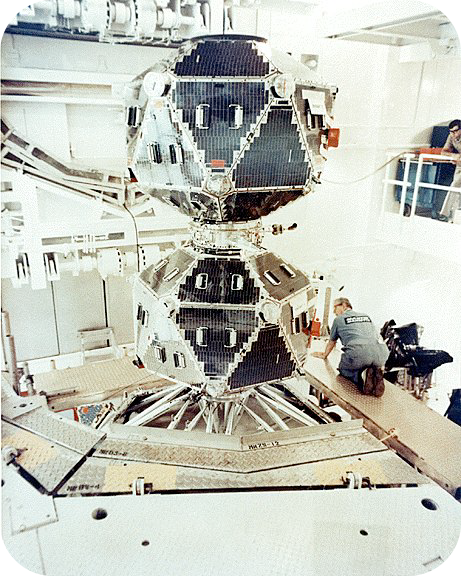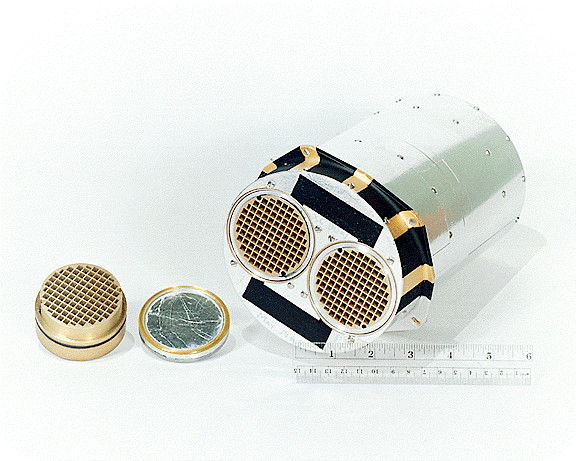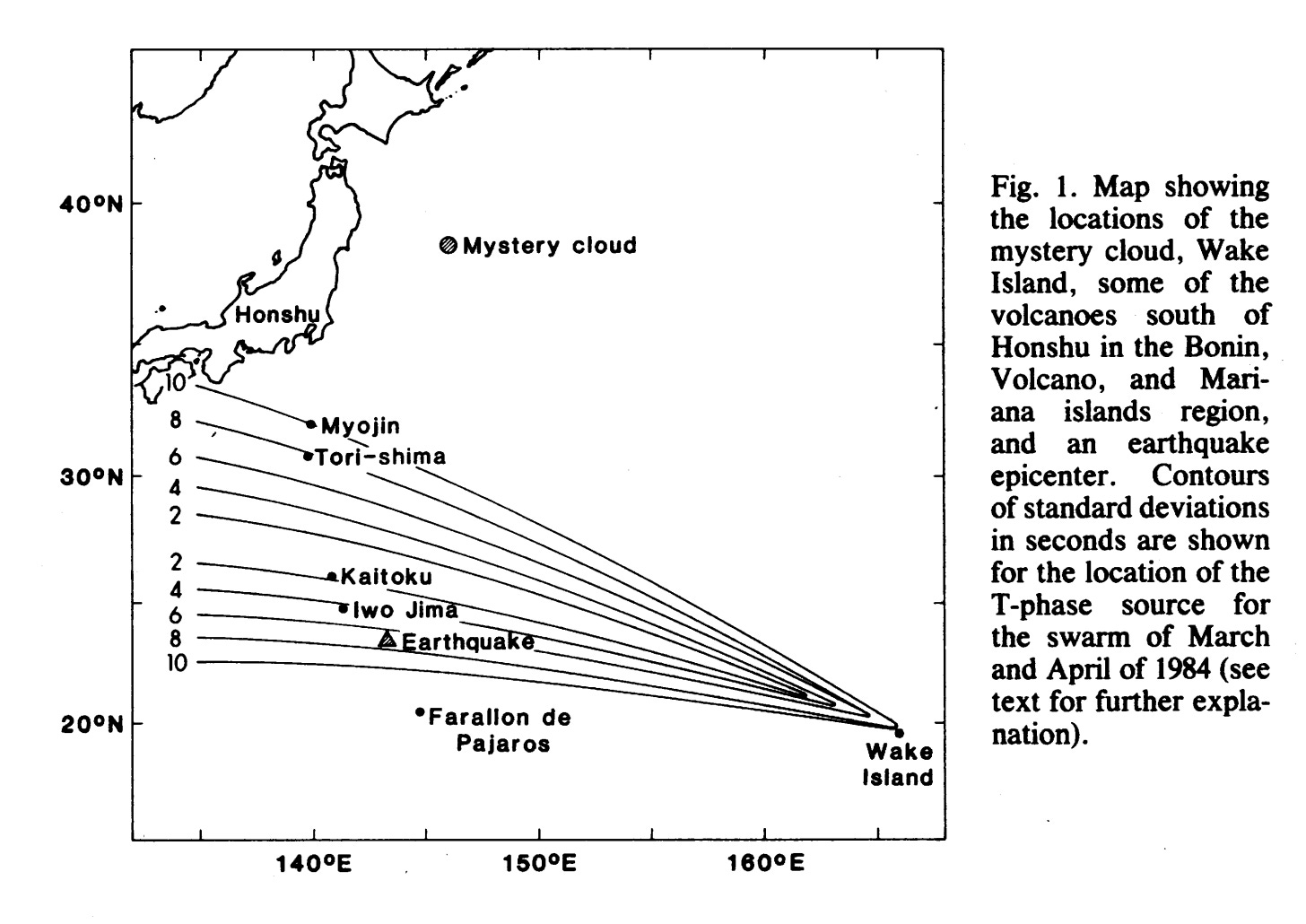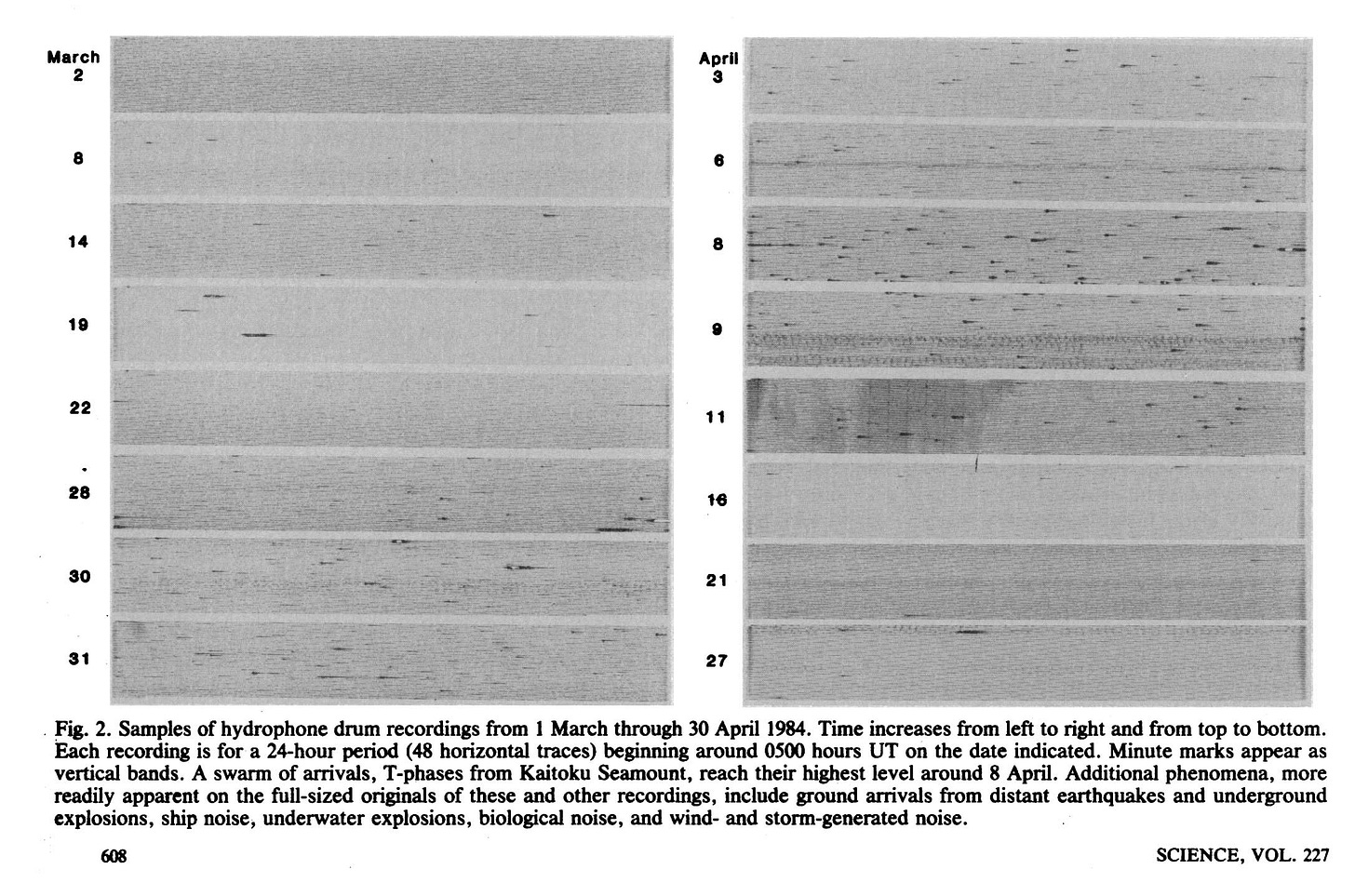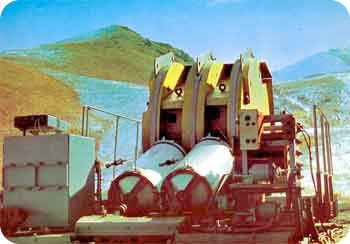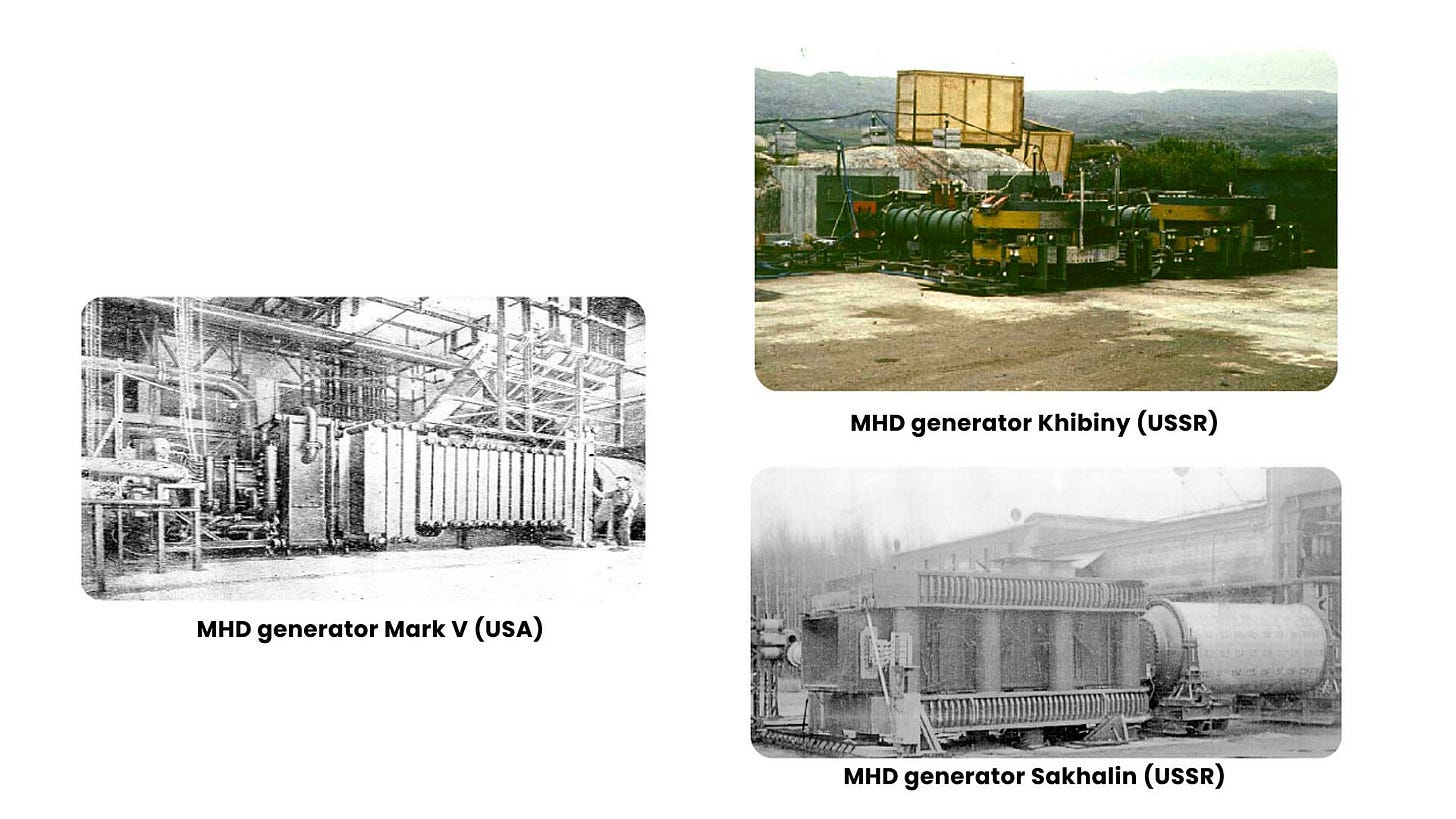CIA investigates anomalous event that triggered LIGHT APPARITION at a secret facility - Additional Info
Could the mysterious mushroom cloud from the 1984 explosion near Japan be caused by Soviet MHD-generator experiments?
An interesting hypothesis emerged regarding an anomalous event occurred on April 9, 1984, that looked like a nuclear explosion with a mushroom-shaped dust cloud over the ocean near Japan. This event drew the attention of the White House, DoD and CIA.
You can learn more about what was revealed about it in the declassified CIA documents from the episode below.
One of the Versadoco channel subscribers noted that such an explosion could have been caused by Soviet experiments with pulsed Magnetohydrodynamic generator or similar MHD generator technology. (More details on what is that on Wiki)
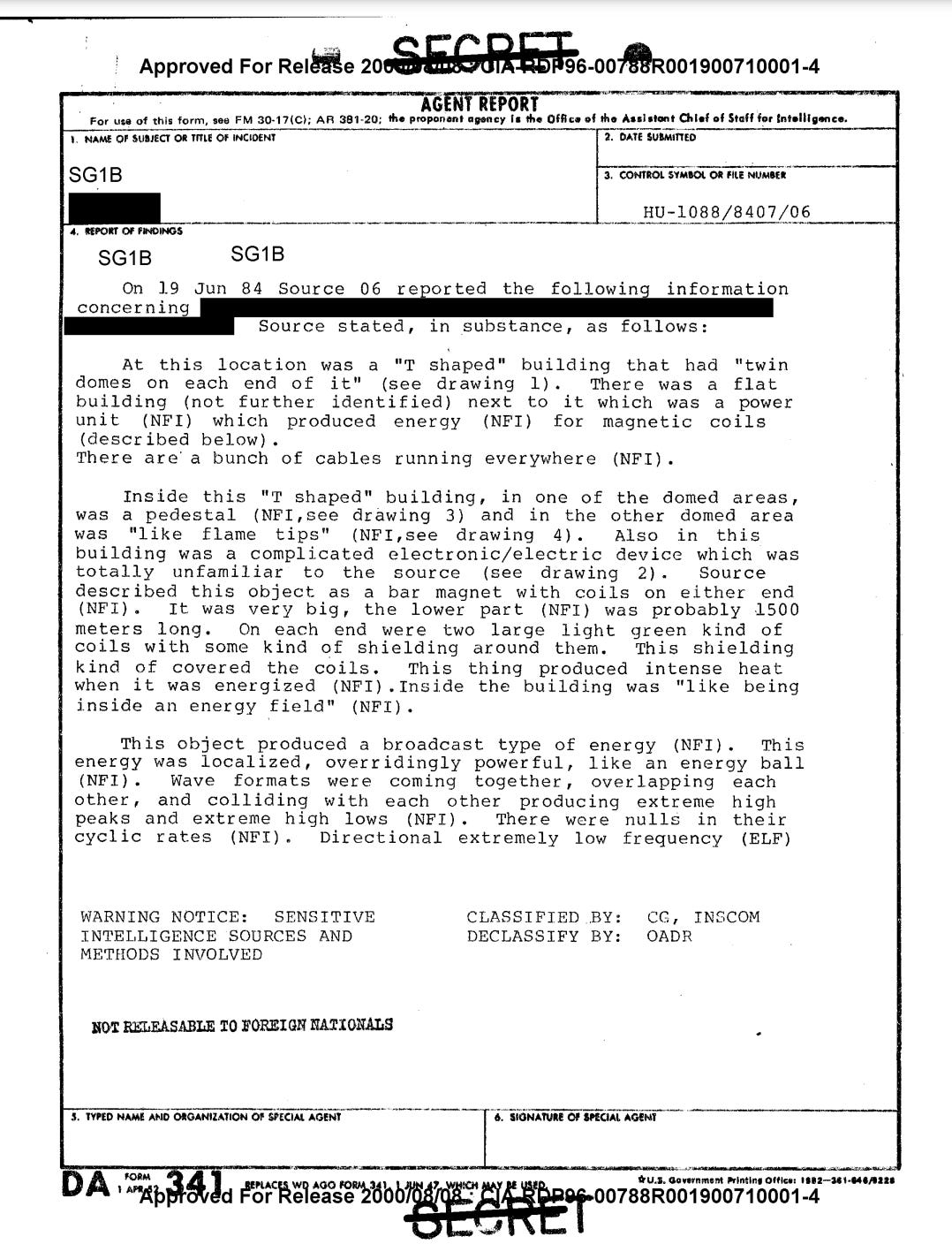
According to a remote viewing report from the CIA's Project Stargate, the explosion was man-made and linked to a T-shaped building located some distance from the blast itself.
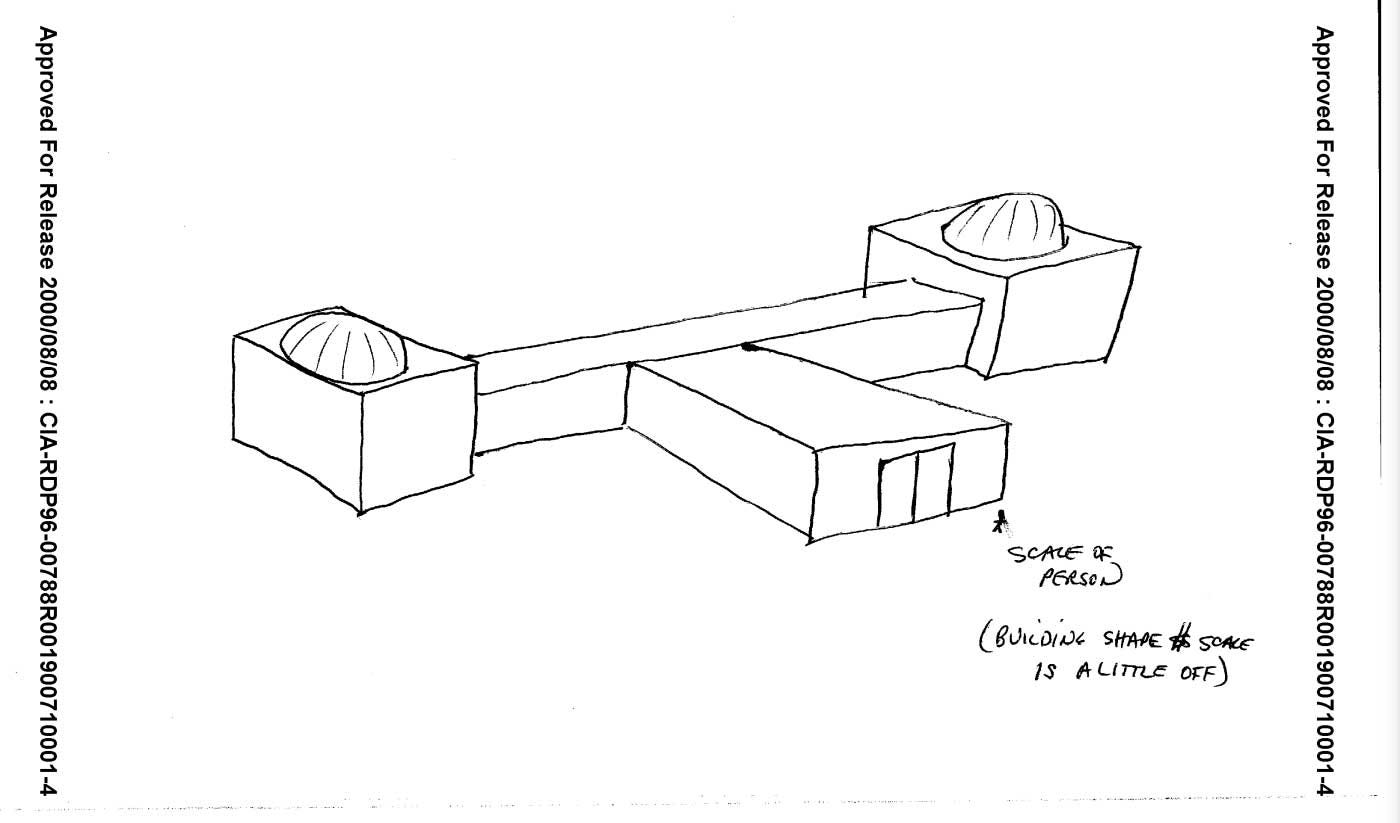
Initial intelligence analysis yielded conflicting results. The explosion resembled a nuclear blast but was not one, as there was no nuclear contamination. Neither natural phenomena such as underwater volcanic eruptions nor a meteorite impact were confirmed.
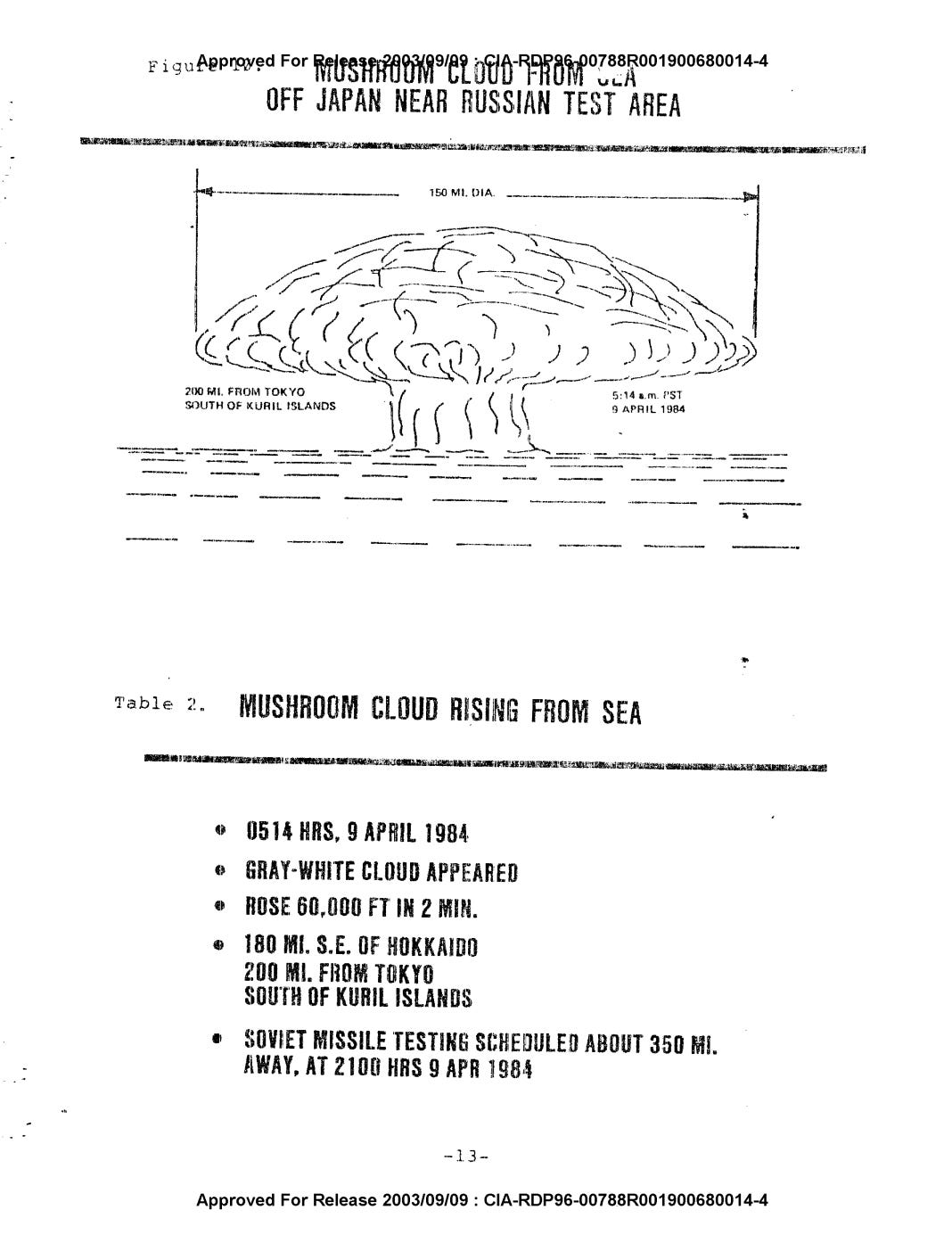
Furthermore, a comprehensive study by an independent group of scientists a year later did not clarify the true nature of the issue:
“Therefore, on the basis of data available at this time, our analyses indicate that the mystery cloud was produced either by an as yet unknown natural phenomenon or by a man-made atmospheric explosion.”
Source: Kaitoku Seamount and the Mystery Cloud of 9 April 1984.
In our video, we presented Tom Bearden's theory about Soviet scalar weapons, but another interesting version has also emerged.
This new theory does not contradict Bearden's but could potentially be an extension of it.
Note certain similarity between sketch of the remote viewer and structure of the MHD-generator. It also shares similarities with the Bearden’s Scalar Interferometer sketch.

A Mysterious Mushroom Cloud
In the seventies, the exploration of the Earth's deep interior began. The idea was simple: pass an electric current through the Earth and measure resistance at various depths. For this experiment, a pulsed Magnetohydrodynamic (MHD) generator was proposed and in 1975 it was installed on the isthmus between the Kola and Central peninsulas.
What’s interesting is that it was intentionally installed near the Kola Superdeep Borehole site for the experimental purposes.
It was known as MHD generator “Khibiny” and was suppose to send a powerful electric charge through the earth helping scientists to measure resistance at various depths to create a geo-electrical cross-section of the Earth's crust.
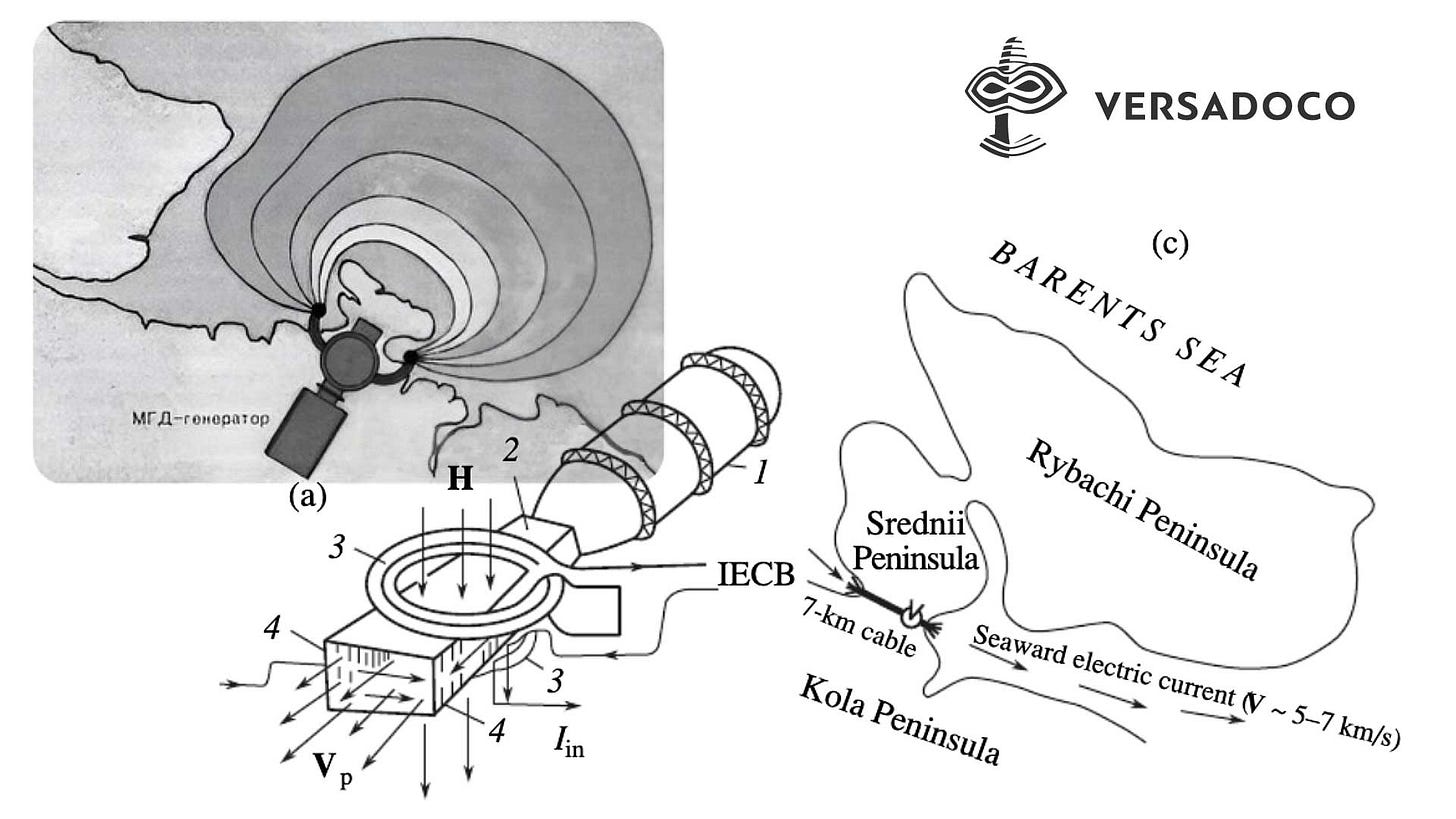
The newspaper "Polar Truth" (Полярная правда) issue No. 19 from February 10, 2006, describes this unique experiment as follows:
"Marking 30 years since the first launch of the magnetohydrodynamic (MHD) generator 'Hibiny' (Хибины) with a capacity of 80,000 kilowatts near the Rybachy Peninsula (полуостров Рыбачий).
This was the idea of Academician Evgeny Pavlovich Velikhov (Евгений Павлович Велихов), who set out to study the deep structure of the Kola Peninsula.
One of the experiment's participants, the scientific secretary of the Kola Science Centre, Anatoly Vinogradov (Анатолий Виноградов), recalled the very first day.
"We arrived at the location of the base camp 'Khibiny' in clear sunny weather. We witnessed a colorful spectacle of the MHD launch. A sea of fire and smoke. A huge current of 22,000 amps went into the sea! Everyone froze by the radio waiting for messages from the receiving stations.
After 10 minutes, 20 minutes, there was no news. The tension grew. Finally, after half an hour, a message came that signals were received more than 100 km away from the MHD generator!
Evgeny Pavlovich jumped for joy like a boy, completely forgetting his distinguished regalia as a member of the Presidium of the USSR Academy of Sciences and the USSR Defense Council. After this message, it became clear that the 'Khibiny' experiment had earned its place in life and was destined to make history in deep geophysical research."
It's important to recognize that any technology involving experimental methods to generate high energy densities, particularly those that create electromagnetic pulses with extreme characteristics, can be adapted for dual-use purposes, i.e. weapon.
As noted, Academician Velikhov was a member of the USSR Defense Council that was overviewed military technology developments.

What's particularly intriguing is how witnesses describe the operation of the powerful MHD generator "Khibiny":
“Reports indicate that following the initial operations of the magnetohydrodynamic generator (MHD generator) at Rybachy (Рыбачьем), the government of Norway lodged a formal protest with the Soviet Union.
The Norwegians suspected that the underground impulses detected by their equipment were from nuclear tests on the Kola Peninsula.
Eyewitness descriptions likened it to a nuclear explosion, with a mushroom cloud forming over the sea.
Resting its thin stem on the ground* [*Author might mean a water surface, not ground - my note], it grew and swayed.
This spectacle included a loud boom echoing across the rocks and over Motovsky Bay (Мотовским заливом). However, this was not a nuclear blast but the result of an eight-second surge of electricity, roughly 20,000 amps, generated by the MHD generator.”
Source: “The Evening Murmansk" newspaper, article “The secret of the Khibiny depths", published on 09/29/2009
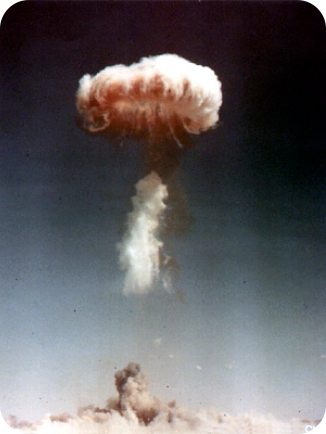
“Eyewitness descriptions likened it to a nuclear explosion, with a mushroom cloud forming over the sea.”
One can speculate about potential military adaptations of these technologies, especially since some generators were designed to be both modular and mobile.
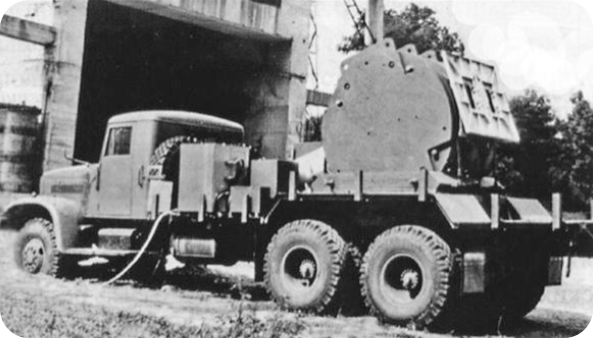
The "Khibiny" («Хибины») experiment was just one of many such initiatives. Other notable experiments aimed at more than just geological exploration include Pamir-1 (1973-1983), Pamir-2 (1986-1989), Ural (1975), and Prognoz-1 (1981, 1991), and these are just those that are publicly known through open sources.
As more experience was gained using these generators, a number of significant discoveries were made.
The "Khibiny" («Хибины») experiments revealed key characteristics of the electrical conductivity of the Earth's crust and upper mantle down to depths of 100-150 km. They also helped to understand the conductivity structure of the ancient crystalline shield in the region and identified promising zones for mineral exploration.

But there is more to it.
One unexpected finding was the discovery of continuous conductive channels in the Earth's crust. These channels allow currents to spread horizontally over hundreds of kilometers, connecting conductive graphite structures.
This discovery leads to an intriguing question: could we potentially map these areas to enable wireless energy delivery to specific sectors?
It is not widely known that the USSR had a complex drilling program for superdeep boreholes, established for the comprehensive study of the Earth's crust. As part of this program, over 30(!) superdeep boreholes were drilled.
These boreholes were connected via special transects (measurement lines) to create regional geological profiles spanning thousands of kilometers. Along these transects, specialized geophysical equipment was installed to simultaneously record all subsurface processes.
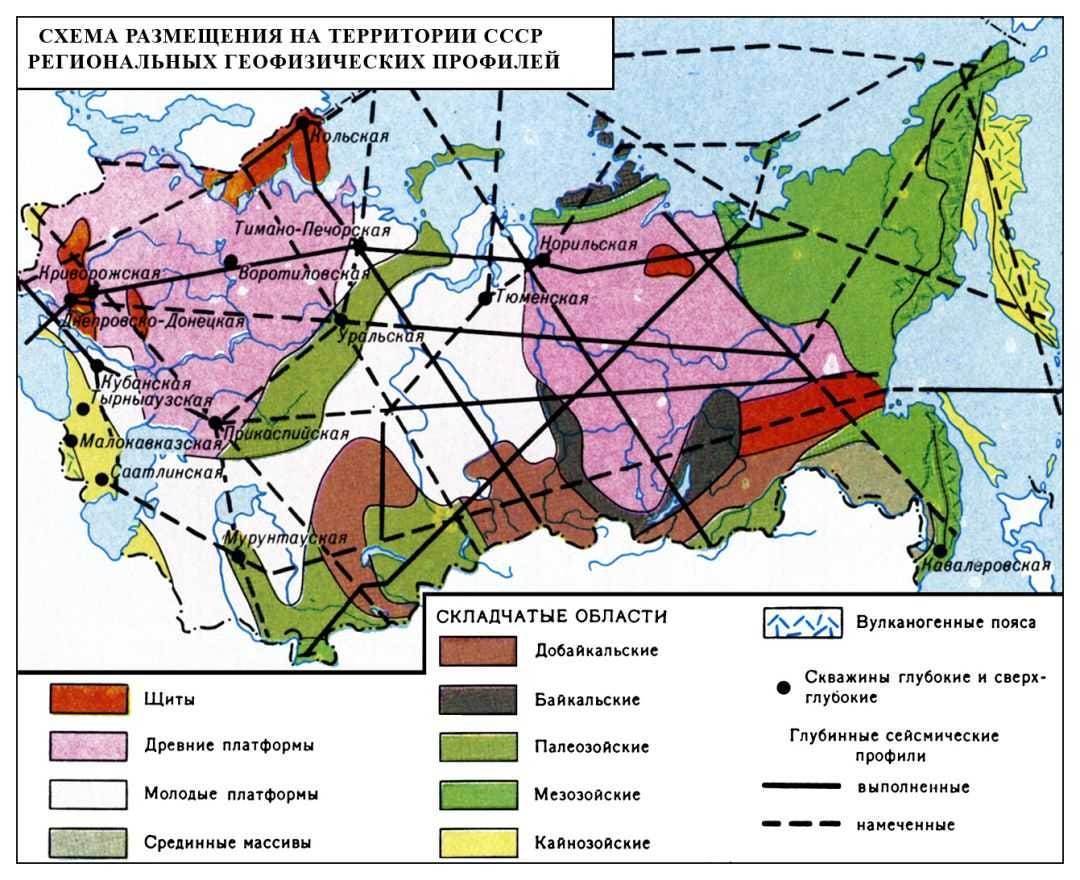
Up until 1991, underground nuclear explosions were used as excitation sources for these measurements, but MHD generators well served these purposes as well.
These experiments led to some intriguing discoveries.
Yulia Pavlovna Konyushaya (Юлия Павловна Конюшая) discusses this in her book "Discoveries of Soviet Scientists" in the chapter dedicated to the Plasma Physics and MHD generators (orig. Открытия советских ученых):
"It turns out that under certain conditions, when plasma interacts with a magnetic field, a narrow high-temperature zone emerges.
Interestingly, this zone does not disappear but instead maintains itself quite stably. This narrow area, with a temperature much higher than the rest of the plasma, is called the T-layer (temperature layer).
The discovery is named the T-layer effect.
The existence of the T-layer in plasma significantly enhances the interaction with the magnetic field. The low-temperature plasma can effectively interact with the magnetic field using the T-layer as a piston.
Secondly, the presence of the T-layer allows the magnetic field to act as a catalyst, enabling the relatively cold plasma to intensively convert its energy into light.
This discovery is significant for both theory and practice, opening new possibilities for solving problems related to constructing MHD generators and creating powerful radiation sources.
The possibility of a T-layer existing in high-temperature plasma has also been demonstrated. Here, its development leads to the possibility of heating specific sections of the plasma to temperatures many times higher than the average plasma temperature. Thus, the T-layer effect could be significant in the problem of controlled nuclear fusion."
(Source: http://nplit.ru/books/item/f00/s00/z0000060/st041.shtml)
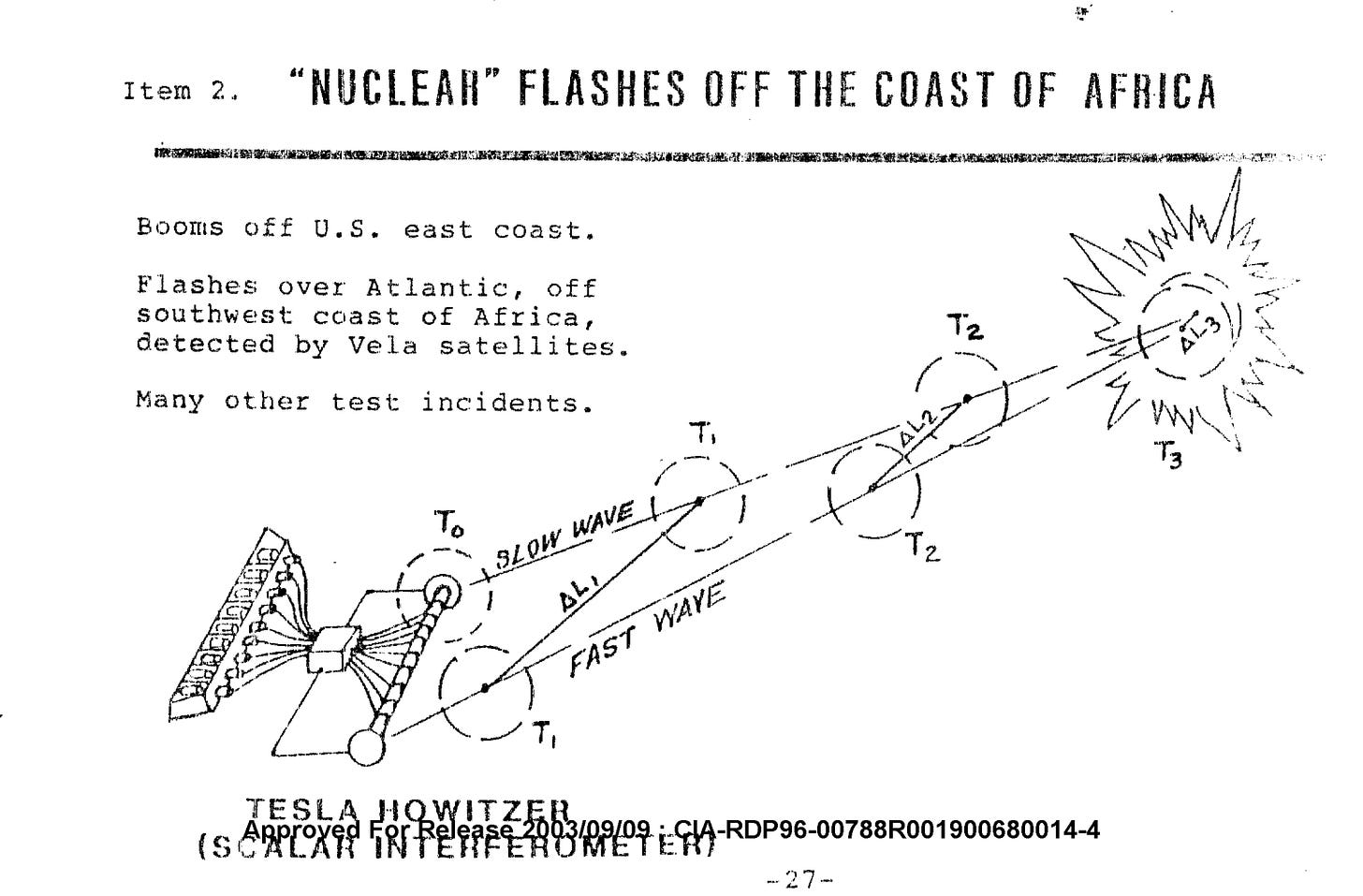
It seems like all the necessary elements have been assembled: methods for generating high energy densities, the generation of electromagnetic pulses with extreme characteristics, and the discovery of continuous conductive channels in the Earth's crust.
This points to the possibility of creating a new type of weapon that, in theory, could display power and characteristics similar to a nuclear explosion, yet not actually be one.
Tom Bearden cited a series of 70(!) such explosions over a decade, which he believed might be potential tests of Soviet scalar weapons.
Could one of these explosions have become known as the Vela Incident?
What Vela Saw
The Vela satellites were part of a U.S. program designed to monitor Soviet compliance with the 1963 Partial Test Ban Treaty.
September 22, 1979.
The Vela satellite, which was set up to detect nuclear tests in the atmosphere, reported seeing a small nuclear explosion (between 2 and 4 kilotons) near South Africa.
The Vela Incident remained a mystery even after an extensive three-month review by White House science staff, along with intelligence and military experts.
The most recent official theory suggests it was a secret Israeli nuclear test, but there are significant inconsistencies with this explanation.
A report published in Science magazine notes that scientists were unable to conclusively resolve the details of the incident:
“The problem remained the same: what non nuclear event could have produced the double-humped signal… which is supposed to be the unique signature of a nuclear blast?
As one official put it, the graph of the 22 September flash is the only one in thousands of signals received in the last 10 years that precisely fits the model of a nuclear event, but which appears not to have been made by a bomb.
The satellite was designed not to be fooled by natural phenomena, and, after a "very extensive review," the panel eliminated nearly all of the obvious explanations.
They ruled out cosmic rays, solar flares, sun glint, meteor flashes, lightning bolts, and super lightning bolts. They turned in exasperation to a category of events referred to as the "zoo animals*" [*or unidentified anomalous phenomena, UAP - my note] - strange signals received over the years for which no satisfactory explanation has been forthcoming.
These had been written off as effects caused by light reflected off small meteoroids passing in front of the satellite's sensors.
Among them were some double-humped signatures, but none fitting the proportions of a nuclear blast signature. The experts ran a computer study to see whether it was physically possible for a meteoroid to cause a nuclear glint in the eye of the satellite.”
In the follow up article in Science they continued:
“The Vela's message proved impossible to corroborate.
Lacking any clear physical proof that a blast had occurred, the White House assembled a panel of independent scientists to review all the data that had been collected. Many scientists who have worked on this case at the Los Alamos and Sandia Laboratories find it hard to believe the reflected-sunlight theory.
One expert at Sandia said there was a plausible explanation for the discrepant bhangmeter readings, but he would not discuss it for fear of violating security regulations.
This Vela expert agreed with the White House that the pattern of the 22 September signal was unusual.
However, he was annoyed that it had been judged so quickly a "zoo event.*" [*UAP event, my note]. The term is used for signals whose cause is not understood; the Vela has produced about 70 such oddities in the last decade.”
What Pilots Saw
Six years after the Vela Incident, the Physical and Geophysical Sciences Directorate of the Air Force Office sponsored independent scientific research on another oddity.
This time it was also a nuclear-like explosion with a mysterious mushroom cloud, which occurred near the coast of Japan.
The results were published in the Science magazine:
“On 9 April 1984, crews of three separate commercial airliners en route from Tokyo to Anchorage, Alaska, observed a gigantic mushroom-like cloud 180 miles off the coast of Japan at approximately 38.50N, 146.0°E
It was described as moving rapidly up and away from a stratiform layer of clouds at about 4300 meters (14,000 feet) eventually reaching a maximum altitude of about 18,000m and a diameter of 320 kilometers.
Although the explosion of a nuclear submarine seemed possible, none of the passenger or cargo planes examined in Anchorage showed any signs of radioactivity.
No fireball or flash was observed.
Nor were there any unusual effects on flight instrumentation.
Also, dust collected from the scene by an F-4 Phantom fighter-bomber deployed by the Air Self Defense Force of Japan showed no abnormal levels of radioactivity.
Another means of testing an explosion hypothesis (conventional or nuclear) is provided by recordings from an array of hydrophones located near Wake Island
This array consists of eleven hydrophones, six on the ocean floor in a 40-km pentagonal arrangement (one of the elements is at the center of the pentagon) and five in the SOFAR (sound fixing and ranging) channel at three sites spanning 300 km. Data from eight of these eleven hydrophones have been recorded on a computer-controlled digital tape system almost continuously since September 1982.
Two of the hydrophones are simultaneously monitored on drum recorders so that the data may be easily evaluated on a daily basis.
The sensitivity of the instruments, which are monitored on Wake Island, the great efficiency of sound transmission in the world's oceans, and the relative proximity of the array to the source of any presumed underwater explosion make it unlikely that such an event could escape detection.
A cloud that caused the concern of experienced flight crews can reasonably be considered to be very unusual.
The captain of one of the airliners, a veteran of 41 years, immediately issued a Mayday alert to Anchorage International Flight Service and put his crew on oxygen as a precautionary measure.
Later he stated that he had "never seen anything like it except in newsreels and films".
Wake Island hydrophone recordings were searched for possible explanations of the mystery cloud observed at 38.5°N, 146.0°E, by flight crews of commercial airlines.
No evidence is found for a single large underwater explosion from this or other locations at the time of the sightings or in the hours preceding those sightings.
Instead, the most conspicuous feature of the recordings is a swarm of impulsive T-phases that began in March 1984 and intensified to a maximum around 8 or 9 April, just before and during the sightings of the mystery cloud….
Therefore, on the basis of data available at this time, our analyses indicate that the mystery cloud was produced either by an as yet unknown natural phenomenon or by a man-made atmospheric explosion.”
Source: Kaitoku Seamount and the Mystery Cloud of 9 April 1984.
“…the most conspicuous feature of the recordings is a swarm of impulsive T-phases that began in March 1984 and intensified to a maximum around 8 or 9 April, just before and during the sightings of the mystery cloud…..”
Could the slow accumulation of impulsive T-phases signals, as noted by researchers, indicate "charging" or "priming" of this sector with electromagnetic pulses from the generator to create conditions for an explosion?
MHD generators, particularly those using powerful electrical discharges, can produce significant acoustic and electromagnetic disturbances. These disturbances might resemble the seismic activity that typically generates T-phase signals, thus being detectable by hydrophones.
If such disturbances propagate through the water, they could be misinterpreted as natural seismic events but be in fact a MHD generator’s operations.
MHD generators possess such capabilities and have been used successfully to reduce the risk of earthquakes.
This discovery was accidental: after the completion of some experiments with the MHD generator, scientists noticed that while the technology was being activated, the number of relatively strong earthquakes near the generator decreased, and they were replaced by many weaker ones. In other words, the MHD generator was capable of breaking down a large underground shock into a series of smaller ones.
The impact of the MHD generator’s powerful electromagnetic pulses on the seismic regime of the Pamir, Northern Tian Shan, and adjacent areas was established. A major experiment was being prepared in the Far East.
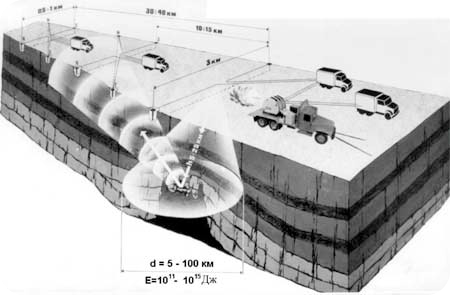
A Flying Saucer Mystery
Can some designs of MHD generators solve yet another mystery: why did remote viewers see saucer-shaped objects?
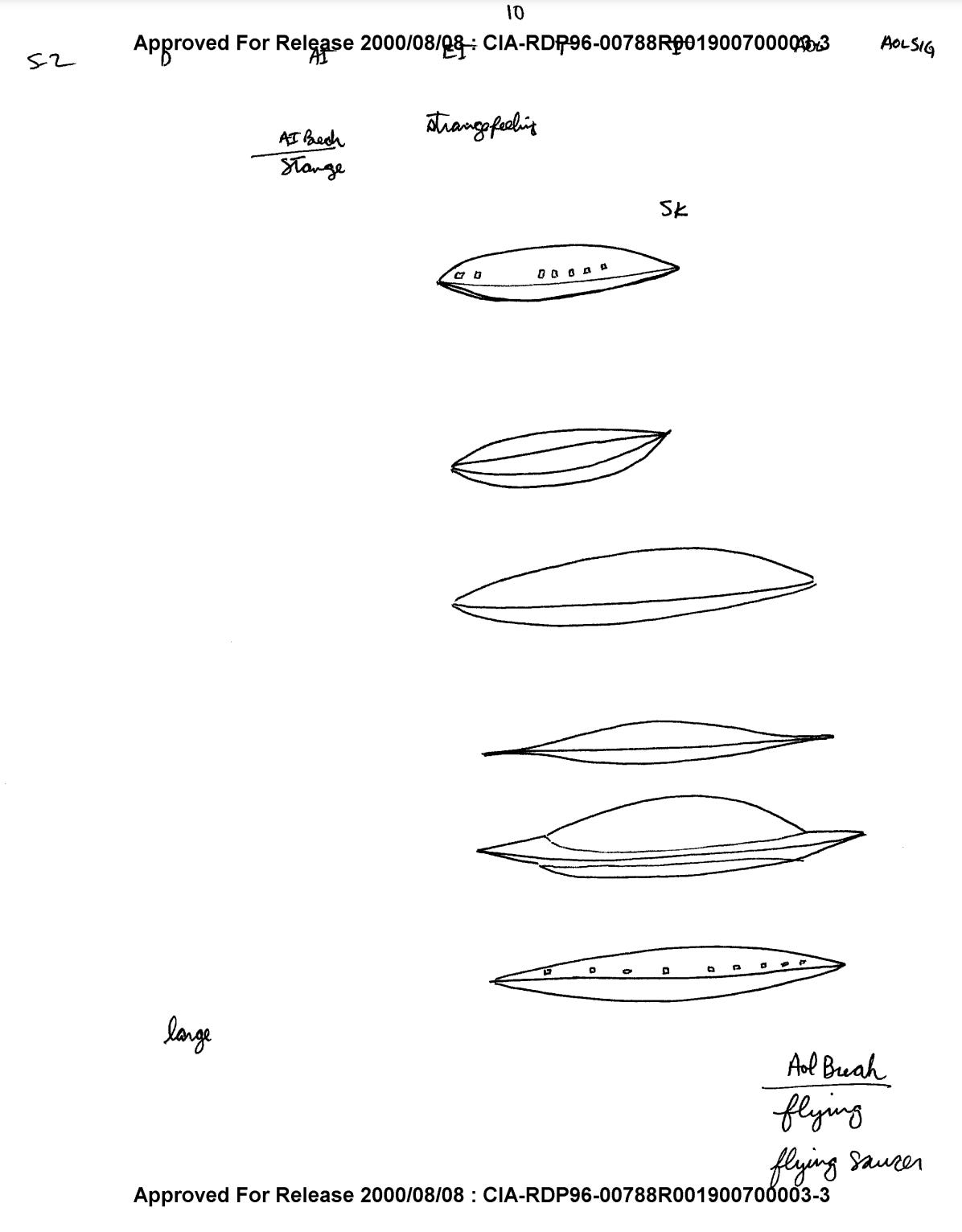
The exact answer isn't clear, but some types of MHD generator designs operating with toroidal plasma and shaped like a disc. Some of these generators indeed have designs that resemble UFOs.
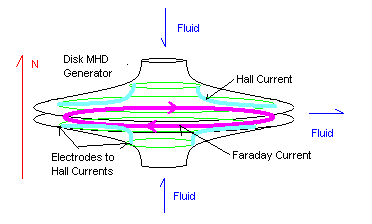
This conceptual overlap could be caused of what’s known as the "overlay" and partially explain why remote viewers perceived saucer-shaped objects.
The question is one of size. While the remote viewer noted that the "flying saucer" was large, MHD generators are typically quite compact.
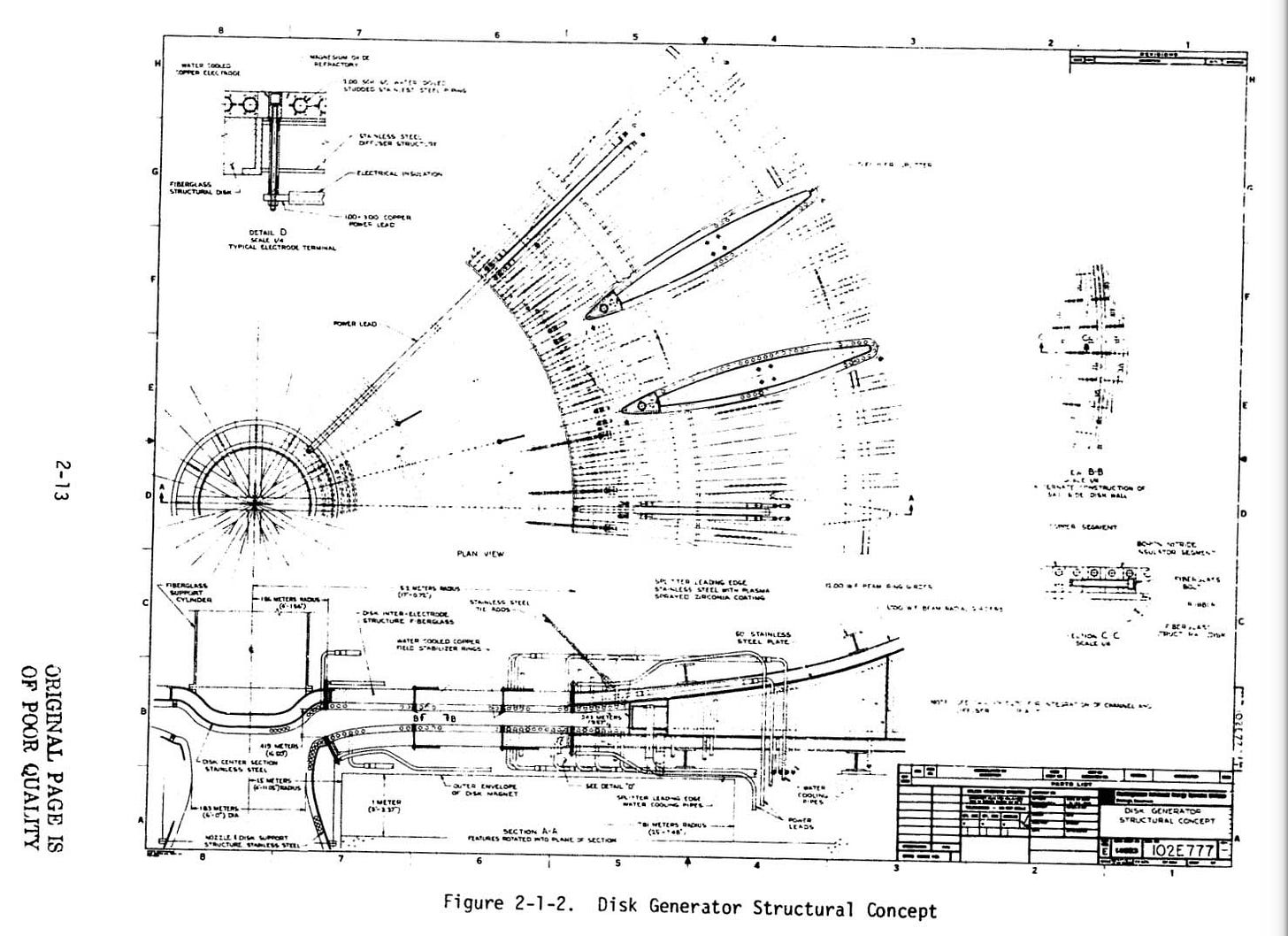
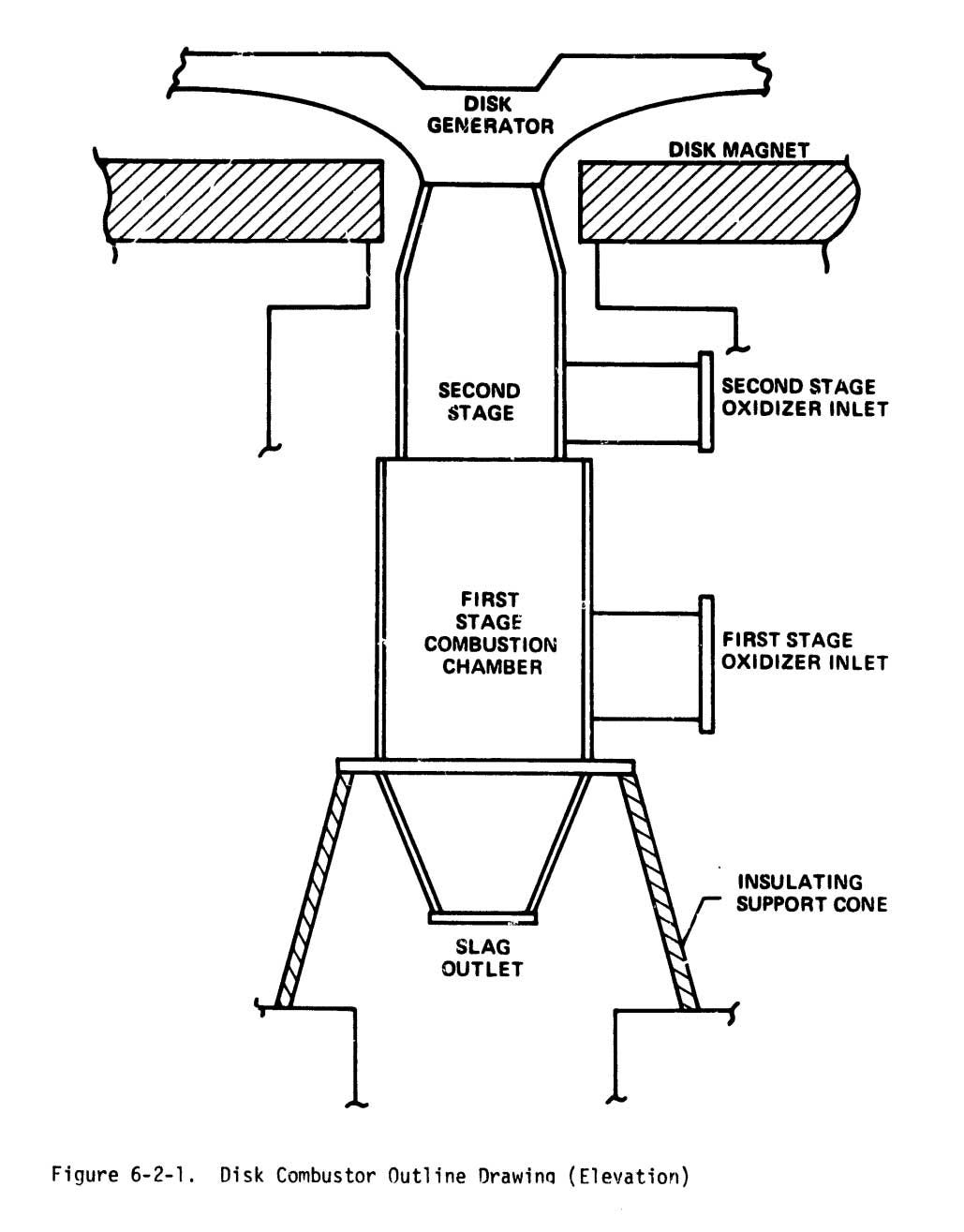

What the CIA remote viewer saw
The CIA remote viewer #01 (probably Joe McMoneagle) identified sophisticated electronic equipment on site (potentially a powerful old computer system), alongside a huge magnet, intense heat, and the sensation of being in a strong energy field with energy transmitting over distance.
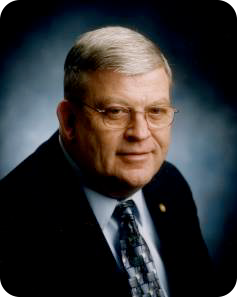
He also linked a T-shaped building to the explosion, suggesting it was related to its cause but located elsewhere and that the explosion was man-made and remotely initiated.
Interestingly, the original coordinates of the target for the remote viewing are still classified.
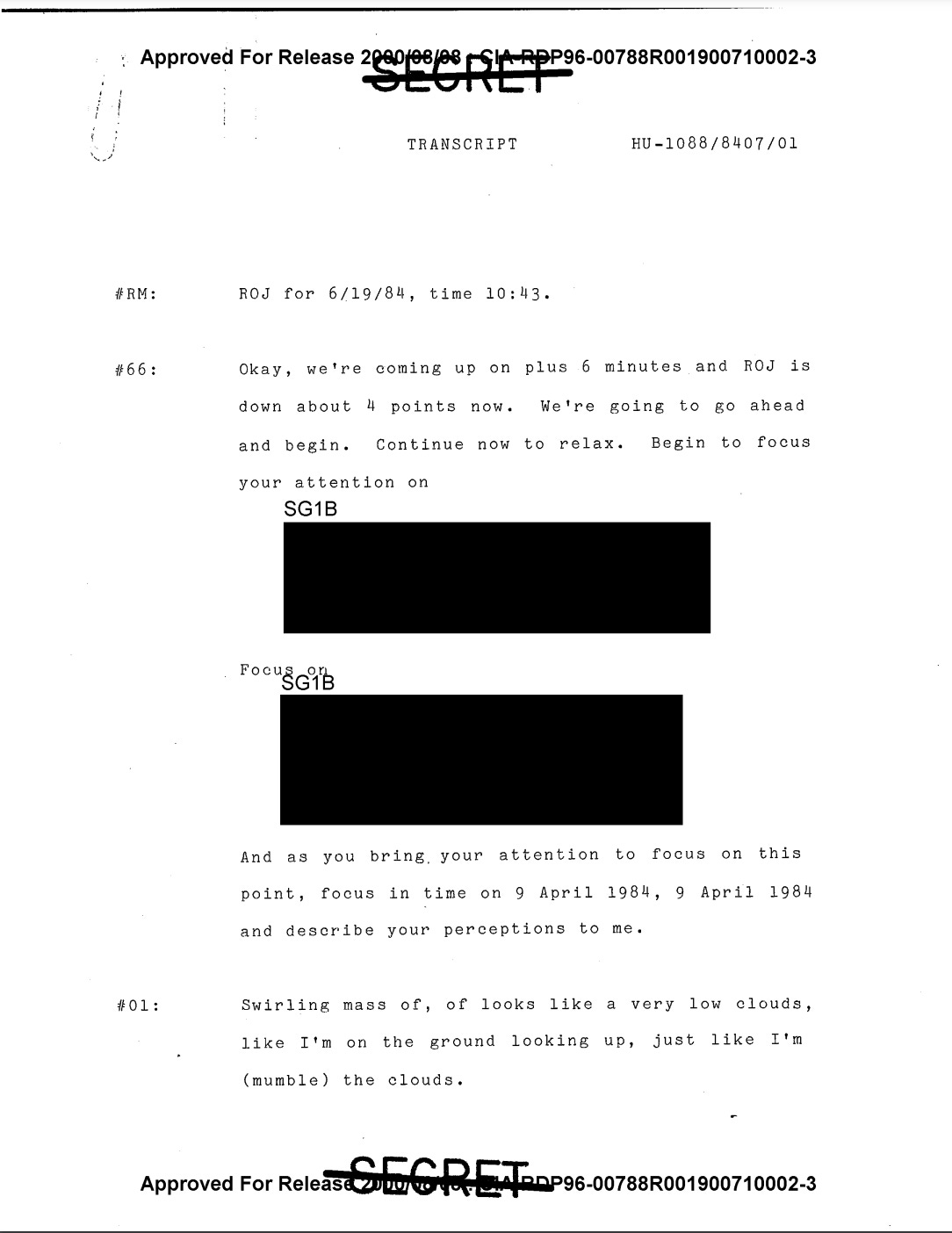
Note that the sketch of the T-shaped building from the report closely resembles the complex structure at the Kola Superdeep Borehole site. Also, we should recall that “coincidentally”, the MHD generator "Khibiny" was installed nearby.
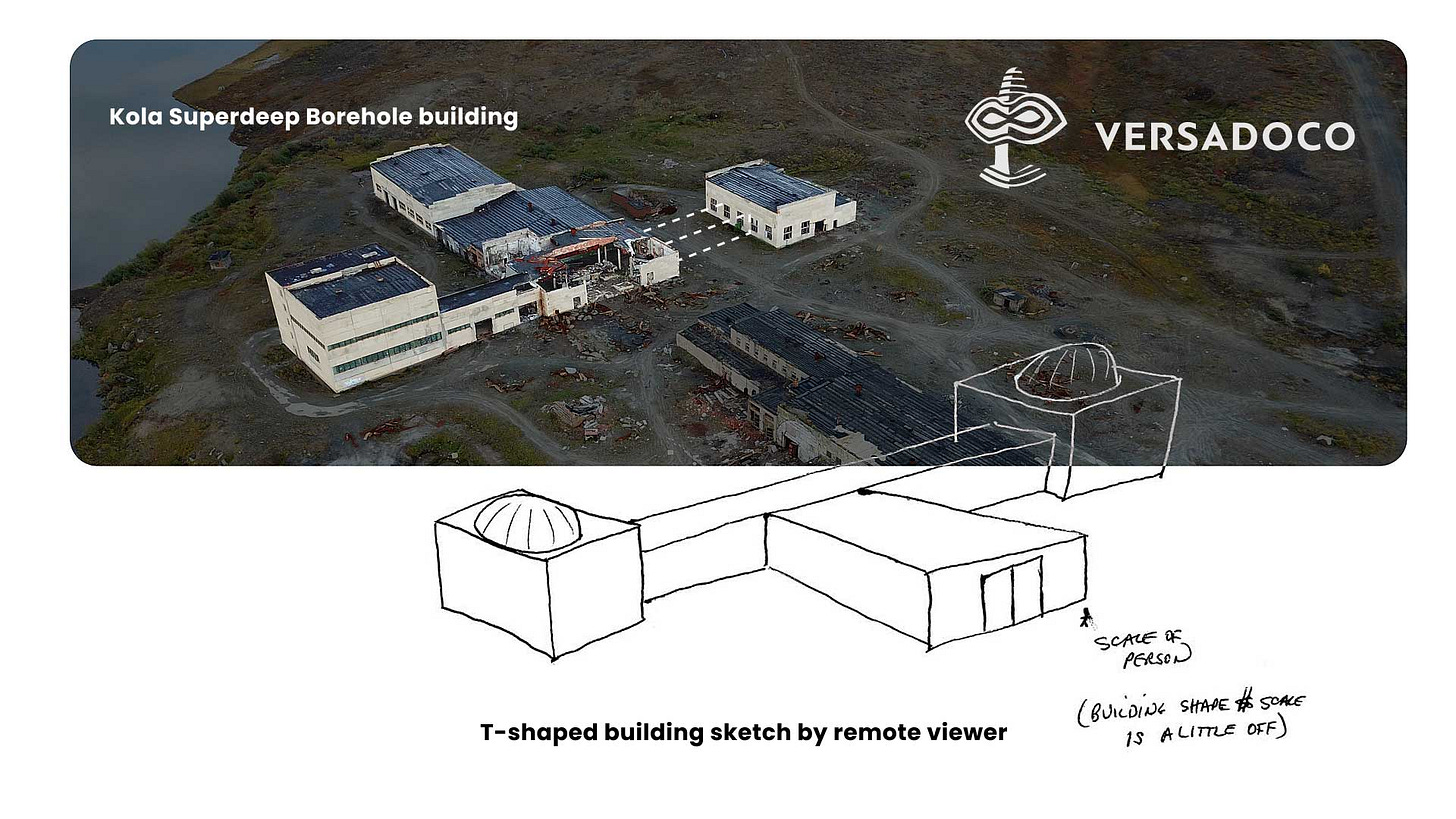
We don’t know if this particular building was the classified target mentioned in the CIA report. However, it's plausible that a similar structure could have been built elsewhere following a typical Soviet design for easier disguise of a military facility as a civilian one.

The remote viewer observed “the tips of little flames” from devices inside the building that resembled him looking at the “bottom of a rocket motor.. numerous small rocket engines.. a lot of rockets on it..” that was potentially linked to plasma creation.
These features align with known components of MHD generators, including their appearance, though it's plausible the military had customized versions for specific tasks.
These cylindrical devices on the image above are essentially rocket engines, operating under pressures of 40 atmospheres and temperatures of 4,000 degrees Celsius. They burn a unique plasma-forming powder fuel, with the plasma stream than accelerating to 2,000 meters per second. This interaction with the magnetic system's field generates electricity.
The unit is remarkably compact, with its primary advantage being the extremely high energy density per unit mass.
Several pulse MHD generators of varying scales and modularity were developed in both the USSR and the USA. For example, the Soviet MHD installation "Sakhalin" («Сахалин») had a power about one-third that of the Dnipro Hydroelectric Station (Дніпровська ГЕС) in Ukraine.
Being near even the civilian version of the MHD electrical experiment was extremely dangerous. The powerful current incinerated everything in its path.
This brutal approach to life, combined with the setup of a weapon of mass destruction, might reverberate loudly through all layers of matter, almost as if declaring "we are coming to you," and could have caught the attention of "neighbors from the other levels."
The CIA intelligence report noted a strange "light apparition" phenomenon as manifestation of some unidentified life form that appeared at the targeted secret facility in conjunction with this experiment.
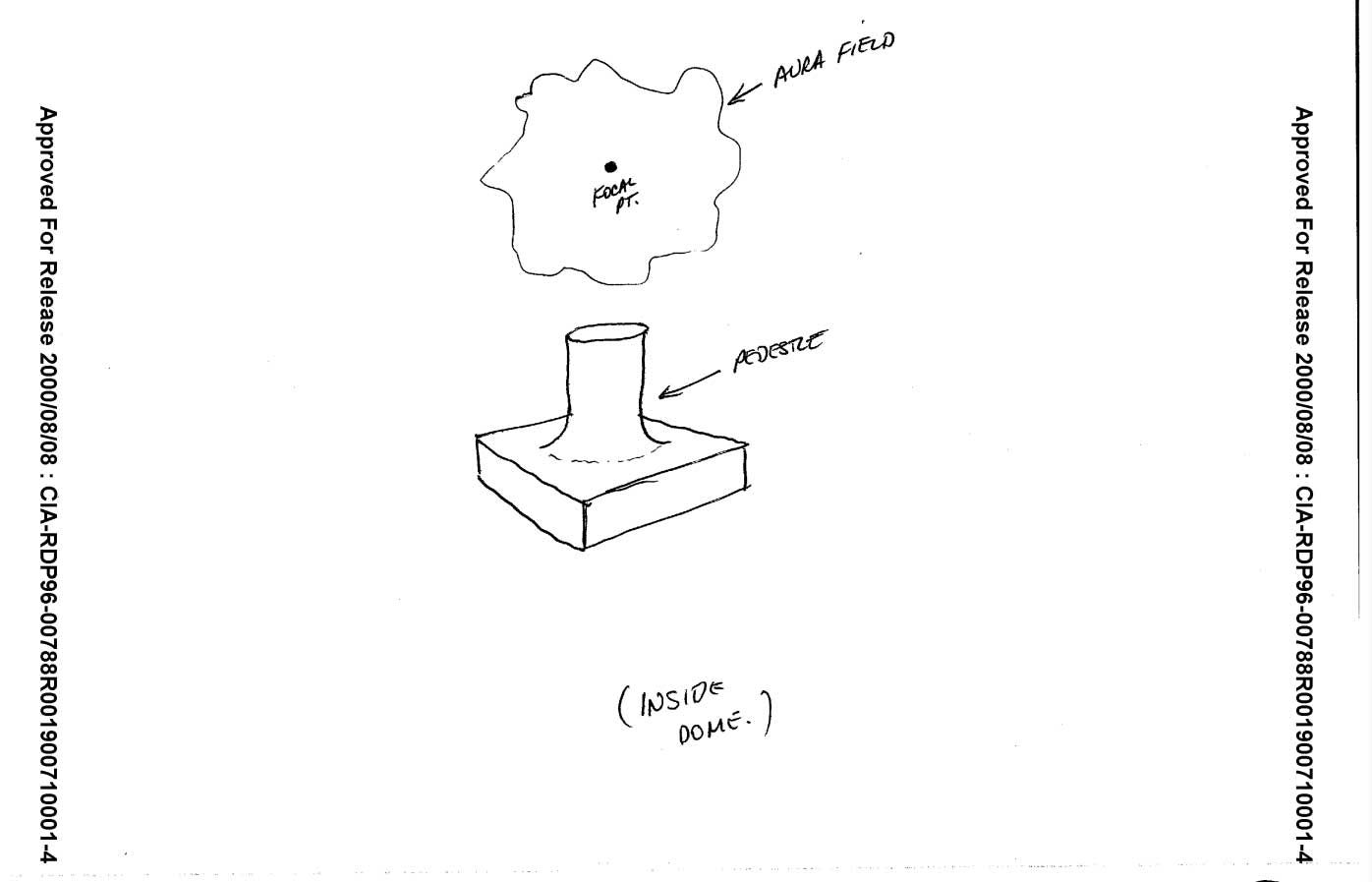
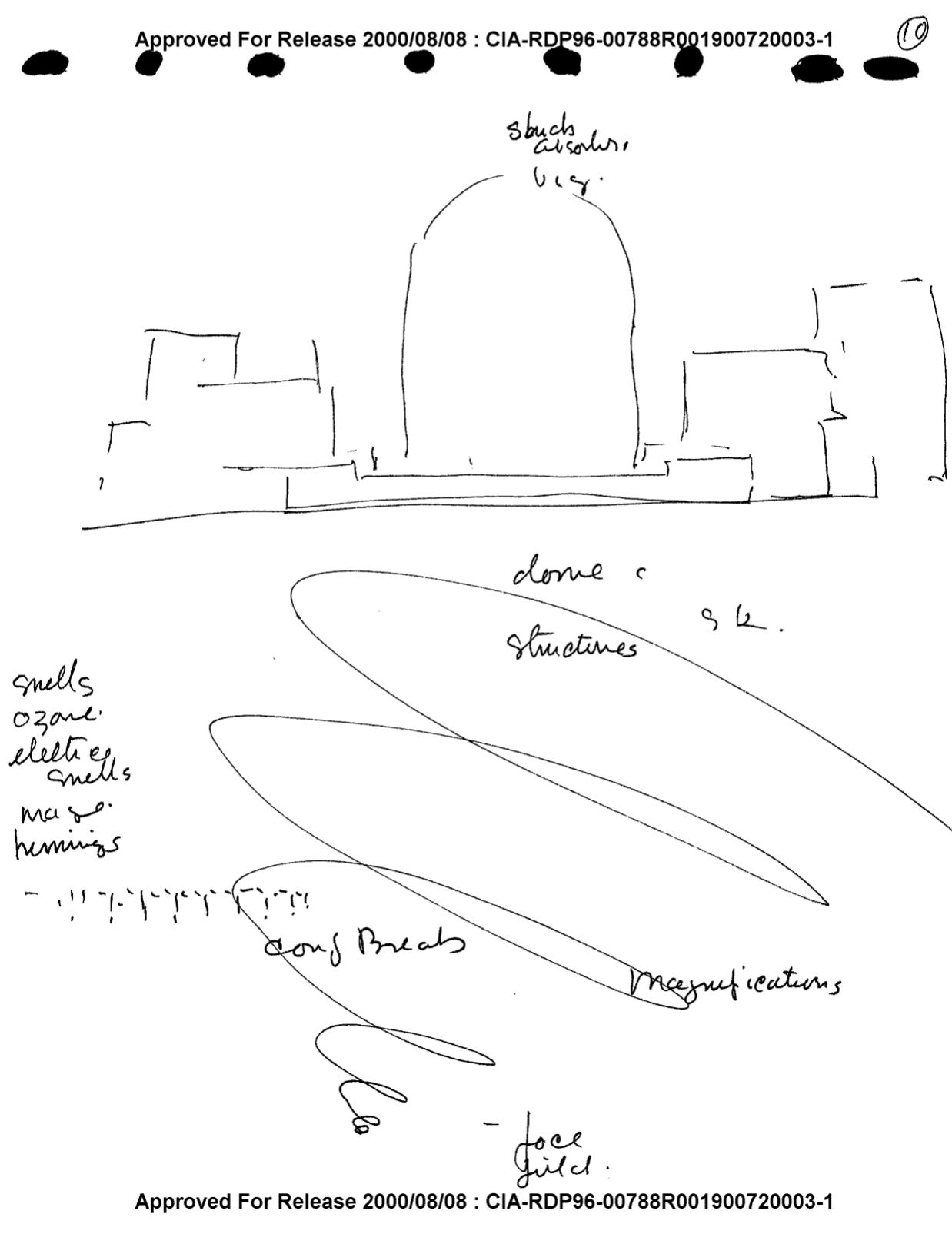
👏I would like to extend a HUGE THANKS to the Versadoco channel subscriber who shared this hypothesis with me.
❗️You can join Versadoco channel to get access to future perks and support production: https://www.youtube.com/channel/UCOJAGwgBflcY9EZHjpe0abw/join
🧢 Versadoco Merch - https://versadoco-shop.fourthwall.com
💸 PayPal donation - https://www.paypal.com/donate/?hosted_button_id=E9BVHT3PC5DEU
📕 You can buy me a book from my wishlist here - https://www.amazon.com.au/hz/wishlist/ls/1N8WVKGSTHVLW?ref_=wl_share
Sources:
Стальные яйца советской науки - https://pikabu.ru/story/stalnyie_yaytsa_sovetskoy_nauki_11263185
Экспериментальные методы и средства генерации высоких плотностей энергии - http://www.ihed.ras.ru/napr2.shtml
Transcript – HU-1088/8407/01, CIA Declassified Transcript Document https://www.cia.gov/readingroom/docs/CIA-RDP96-00788R001900710002-3.pdf
Document HU-1087/8407/63, CIA Declassified Document https://www.cia.gov/readingroom/docs/CIA-RDP96-00788R001900700001-5.pdf
Document HU-1089/8407/02, CIA Declassified Document https://www.cia.gov/readingroom/docs/CIA-RDP96-00788R001900720001-3.pdf
Кaitoku Seamount and the Mystery Cloud of 9 April 1984, Daniel A. Walker, Charles S. McCreery, and Firmin J. Olivei, Science, Vol. 227, No. 4687, Feb 8, 1985 - https://sci-hub.se/10.1126/science.227.4687.607
A Year After Mushroom Cloud, The Mystery Lingers, Walter Sullivan, The New York Times, May 21, 1985 https://www.nytimes.com/1985/05/21/science/a-year-after-mushroom-cloud-the-mystery-lingers.html
Star Wars Now! The Bohm-Aharonov Effect, Scalar Interferometry, and Soviet Weaponization, T. E. Bearden, April 24, 1984 - https://www.cia.gov/readingroom/docs/CIA-RDP96-00788R001900680014-4.pdf
Khibiny MHD experiment: The 30th anniversary - https://www.researchgate.net/publication/289713647_Khibiny_MHD_experiment_The_30th_anniversary




